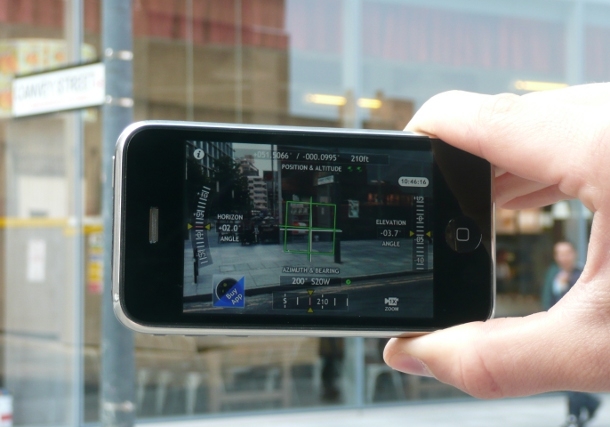Augmented reality smartphones soar

Big brands are helping to drive interest in mobile AR, says Juniper...
The number of smartphones capable of running augmented reality (AR) apps and services increased significantly last year, according to analyst house Juniper Research.
A big investment push from big-name brands, retailers and mobile vendors helped drive up the installed base of AR-capable smartphones from eight million in 2009 to more than 100 million in 2010, the analyst said.
Augmented reality refers to the overlaying of computerised elements, such as graphics or text, on top of a real-time video or other real-world display with the aim of providing additional information to the viewer.
While the technology has been around for years, in aircraft cockpits for instance, smartphones are helping to drive usage as these high-end mobile devices put the necessary hardware - accelerometers, cameras, compasses, GPS - right in people's pockets.

Augmented reality is growing, thanks to significant sales of smartphones
Photo: Tim Ferguson/silicon.com
The number of AR app developers also grew, as development moved from being the preserve of smaller companies and researchers at technical institutes to larger players, according to Juniper. The analyst predicts global revenues for mobile AR will approach $1.5bn by 2015.
Writing in its Mobile Augmented Reality report, Juniper identified chipmaker Qualcomm's release of an AR-software development kit for Google's Android mobile OS, and mobile maker Samsung's decision to preload AR browsers on several handsets, as key drivers of the technology. It also pointed to mobile advertising campaigns that featured AR elements, from brands such as Carlsberg and Coca Cola, as factors helping to drive uptake by raising the profile of AR and educating mobile users about it.
"Even if consumers don't necessarily understand how [AR] works, they can see real-life examples of AR in action," said report author Dr Windsor Holden in a statement. "Likewise, it serves to generate wider interest among brands and developers who can see potential applications for AR technology; it educates the market."
Yet despite this interest in AR, the technology still faces challenges, according to Juniper. Developers and consumers have yet to be convinced that AR apps are more than "gimmicks", the report warned. Early deployments of the tech - where AR was added to an app as an afterthought or offered limited functionality, adding little to the overall user experience - have contributed to the sense that AR still needs to prove its worth.
This view chimes with recent research from Analyst house Forrester Research - which warned companies building mobile apps to steer clear of AR for now, saying that while it is a disruptive technology it is still years from mainstream maturity.